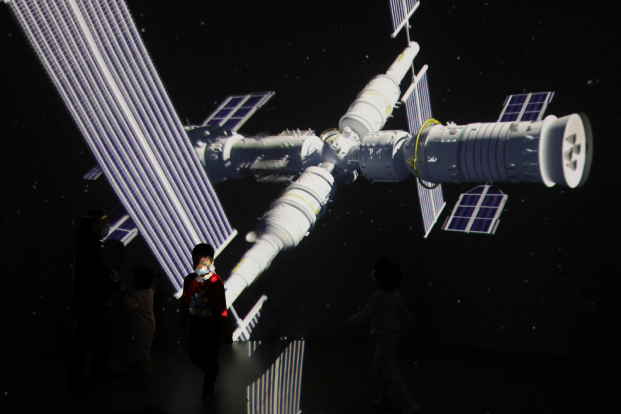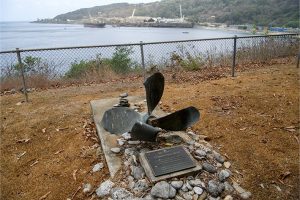China plans to double the size of its space station in a bid to tempt other nations away from using the NASA-led International Space Station (ISS).
Beijing wants to expand its Tiangong space station to six modules from three in coming years, offering an alternative platform for near-Earth missions as the ISS nears the end of its lifespan.
The operational lifetime of the Chinese space station will be more than 15 years, the China Academy of Space Technology (CAST), a unit of China’s main space contractor, said at the 74th International Astronautical Congress in Baku, Azerbaijan, on Wednesday.
China’s self-built space station, also known as Tiangong, or Celestial Palace in Chinese, has been fully operational since late 2022, hosting a maximum of three astronauts at an orbital altitude of up to 450km (280 miles).
At 180 metric tons after its expansion to six modules, Tiangong will still just be 40% of the mass of the ISS, which can hold a crew of seven astronauts. But the ISS, in orbit for more than two decades, is expected to be decommissioned after 2030, about the same time China has said it expects to become “a major space power”.
Also on AF: China Will Use Fake News to Sway Taiwan Vote: Security Chief
Chinese state media said last year as Tiangong became fully operational that China would be no “slouch” as the ISS headed toward retirement, adding that “several countries” had asked to send their astronauts to the Chinese station.
But in a blow to China’s aspirations for space diplomacy, the European Space Agency (ESA) said this year it did not have the budgetary or “political” green light to participate in Tiangong, shelving a years-long plan for a visit by European astronauts.
“Giving up cooperation with China in the manned space domain is clearly short-sighted, which reveals that the US-led camp confrontation has led to a new space race,” the Global Times, a nationalist Chinese tabloid, wrote at the time.
Tiangong has become an emblem of China’s growing clout and confidence in its space endeavours, and a challenger to the United States in the domain after being isolated from the ISS. It is banned by US law from any collaboration, direct or indirect, with NASA.
Russia, a participant in the ISS, has similar space diplomacy plans, suggesting that Moscow’s partners in the BRICS group – Brazil, India, China and South Africa – could construct a module for its space station.
Roscosmos, the Russian space agency, said last year it was planning to build a space station comprising six modules that could accommodate up to four cosmonauts.
- Reuters with additional editing by Sean O’Meara
Read more:
China Open to International Team-Ups on Chang’e-8 Moon Mission
US Space Force General Floats China Crisis Hotline Plan
India Switches Off Pragyan Moon Rover, Sets Sights on Sun
China’s Next-Gen Rocket Could Take 7 to Moon, Space Station























